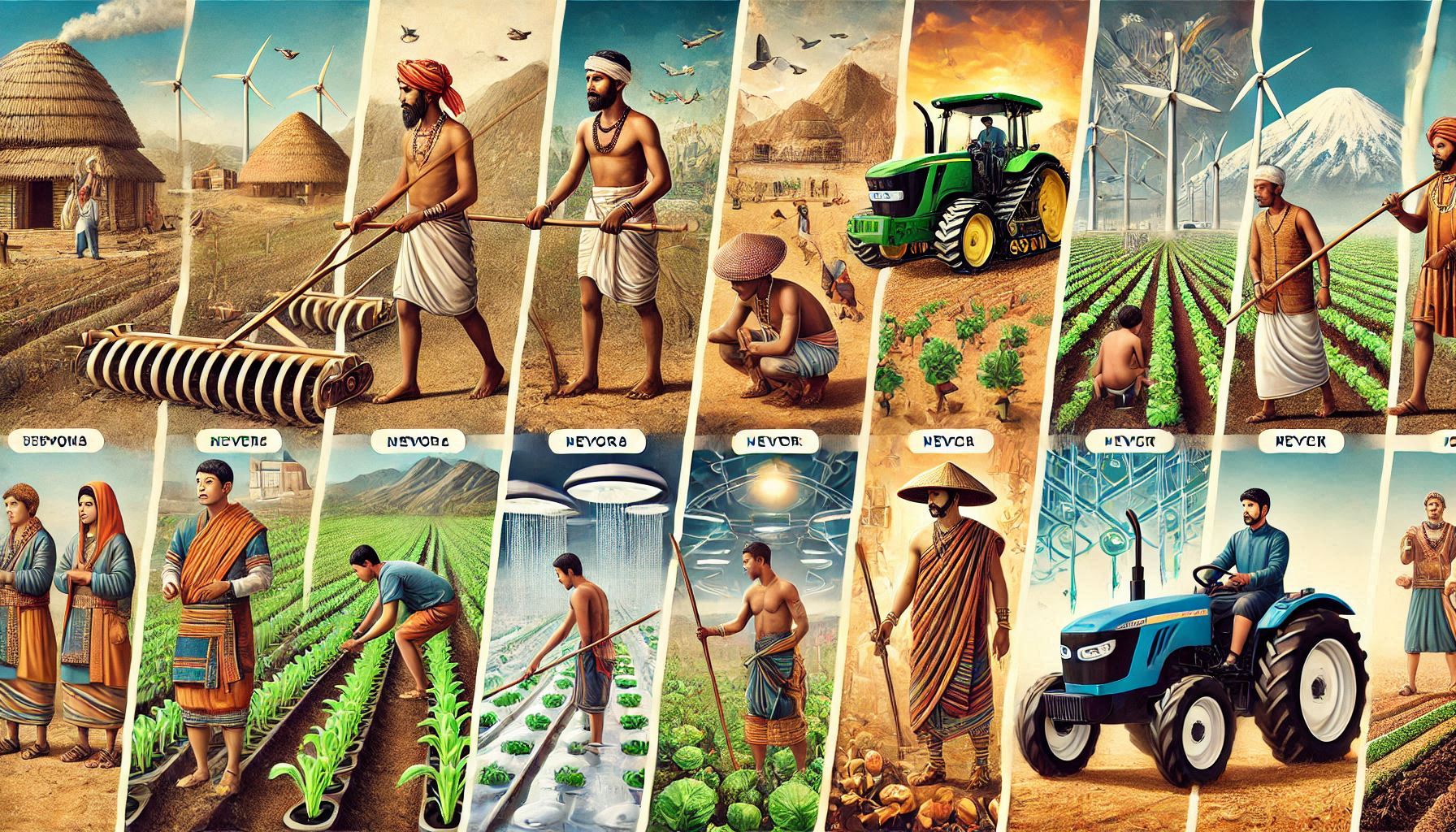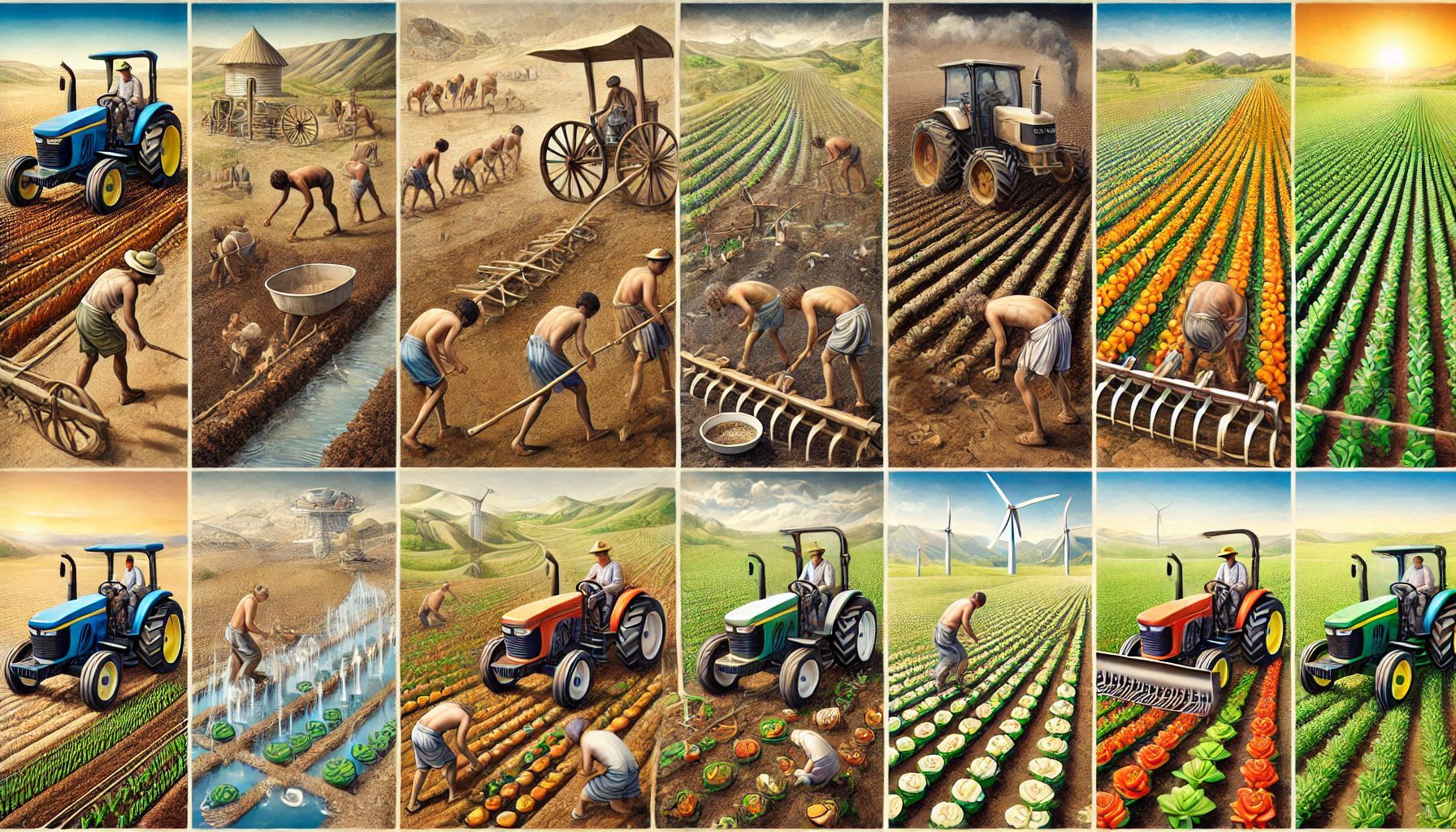- Agronomy is the science of soil management and crop production.
- It is the combination of some aspects of biology, chemistry, ecology, earth science, and genetics.
- The science of agronomy aims at enhancing food production with resource conservation.
- It encompasses research on plant genetics, soil science, meteorology, and pest control.
- The goal of an agronomist is to make farming more productive and resource-friendly.
History
- The word “agronomy” comes from the Greek words “agros,” meaning field, and “nomos,” meaning law.
- Ancient Egyptians and Mesopotamians were some of the earliest practitioners of agronomy, in that they established irrigation systems.
- The rise of modern agronomy started in the 19th century with discoveries in chemistry and biology.
- Norman Borlaug was an agronomist known as the “Father of the Green Revolution” who was awarded a Nobel Prize for his research to increase crop yields.
- High-yielding crop varieties and new farming practices became part of the worldwide Green Revolution.
Soil Science
- Soil is composed of minerals, organic matter, air, and water.
- There are more than 12,000 varieties of soil worldwide.
- The soil pH determines the plant nutrition.
- Loam soil is suited for farming because of balanced sand, silt, and clay.
- Soil erosion in agriculture is a major concern by reducing arable land.
Crop Production
- Agronomists have explored the life cycle of crops so that planting and harvesting time would be optimized.
- Crop rotation helps improve soil fertility besides reducing pests.
- Wheat, rice, maize, and soybeans are some of the main crops worldwide.
- Legumes help in nitrogen fixation, which means the soil is healthier.
- Hybrid seeds are developed through cross-pollination of two parent plants for more production.
Fertilizers and Nutrients
- Fertilizers contain three major macronutrients: nitrogen, phosphorus, and potassium (NPK).
- Organic fertilizers are made from animal manure or composted plants.
- Excessive fertilizer use can cause water pollution due to runoff.
- Precision agriculture involves the use of technology in applying fertilizers.
- Cover crops such as clover prevent nutrient loss from soil.
Pest and Disease Management
- Integrated Pest Management (IPM) is a combination of biological, cultural, and chemical control methods.
- Pesticides should be used in moderation to avoid resistance in pests.
- Biological controls, such as using ladybugs to control aphids, are non-toxic.
- Fungal diseases like rust and blight are common in cereal crops.
- Genetically modified crops have built-in pest resistance.
Water Management
- Irrigation is essential for farming in arid regions.
- Drip irrigation conserves water by delivering it directly to plant roots.
- Rain-fed agriculture depends entirely on natural rainfall.
- Waterlogging can damage crops by depriving roots of oxygen.
- Drought-tolerant crop varieties are essential for water-scarce regions.
Sustainable Practices
- Conservation tillage minimizes soil disturbance and reduces erosion.
- Agroforestry integrates trees and shrubs into farming systems.
- Organic farming avoids synthetic chemicals and focuses on natural processes.
- Cover cropping and mulching reduce the need for chemical inputs.
- Sustainable agriculture practices aim at minimizing the carbon footprint in agriculture.
Technology in Agronomy
- Precision agriculture with GPS and sensors ensures farming in the most efficient way.
- Crop health monitoring with drones, and field management by drones
- Genetic engineering enhances crop resilience and increases productivity.
- AI and machine learning helps in weather forecasting and pest infestation
- Soil sensors measure real-time moisture and nutrient levels
Climate and Weather
- Climate change effects on crops, water availability, and pests
- Agronomists study drought tolerance to mitigate climate change effects.
- Heat stress during flowering can minimize crop production.
- Late spring frosts can destroy planting early.
- Agroclimatology is the association between the crop and weather.
Food Security
- Global hunger would be reduced by greater dependence on agronomy.
- The world population needs to achieve a new production of 70 per cent in food by 2050.
- Urban agriculture is emerging that tackles issues of food deserts in metropolitan centers.
- Crop diversity safeguards crops from diseases and climate factor impact.
- Post-harvest losses take up a big share of the wasted food worldwide.
Weeds and Their Management
- Weeds compete for light, water, and nutrients with the crops.
- Herbicides are chemicals which are used in weed management.
- In small-scale farming, manual weeding is still quite common.
- Crop spacing and mulching minimize weed growth.
- Some of the weeds, like parthenium, are invasive and injurious to agriculture.
Genetics and Breeding
- Plant breeding enhances crop yield and its resistance to stress.
- Open-pollinated seeds reproduce true to type.
- Hybrid seeds have to be bought every year in order to have the maximum yield.
- CRISPR technology allows for very precise changes in genetics.
- Genetic diversity is the basis for crop sustainability over the long run.
Economic Contribution
- Agronomy is an important sector in the global economy.
- In developing countries, agriculture forms a major portion of the GDP.
- Export crops like coffee and cotton are important to the economies of some countries.
- Long-term sustainability reduces production costs.
- Crop commodity prices change with changes in demand and supply globally.
Global Practices
- Asia is the world’s biggest rice producer.
- North America is characterized by massive mechanized farming.
- Africans are mainly engaged in subsistence farming.
- Organic farming and sustainability-oriented farming are prominent in Europe.
- Latin America is a world leader in soy and coffee production.
Future of Agronomy
- Vertical farming increases yield in areas with limited space.
- Carbon farming deals with carbon sequestration in soils.
- Lab-grown meat is likely to reduce the demand for traditional livestock farming.
- Further optimization of water use through smart irrigation systems.
- Renewable energy, such as solar-powered gear, will be the norm.
Fun Facts
- Plant roots can release chemical signals that alert the plant to possible pests.
- Soil harbors billions of microorganisms in one gram.
- Earthworms enhance soil aeration and fertility.
- Rice is the food staple for more than half the world’s population.
- There is a seed bank in Svalbard to save seeds for planting in the future.
- Overuse of pesticides can create “super pests.”
- Organic farming uses natural predators to kill pests.
- The rhizosphere is that portion of soil affected by root activity.
- Photosynthesis is the process where plants capture solar energy as a fuel source.
- Nitrogen is usually the most deficient nutrient found in soils.
Policies and Governance
- FAO provides world leadership for sustainable agriculture
- Agricultural subsidies inform farm policies in much of the world.
- Land degradation threatens more than 20 percent of the world’s agricultural land
- Goals for sustainable agriculture are incorporated in the SDGs.
- Farmer education programs are necessary to alter poor practices
Miscellaneous
- Urban farming uses rooftops and vacant lots for growing food.
- Climate-smart agriculture helps farmers adapt to changing conditions.
- Aquaponics combines fish farming with hydroponics for mutual benefits.
- Some crops, like quinoa, are gaining popularity for their resilience.
- Bees and other pollinators are important to crop production.









